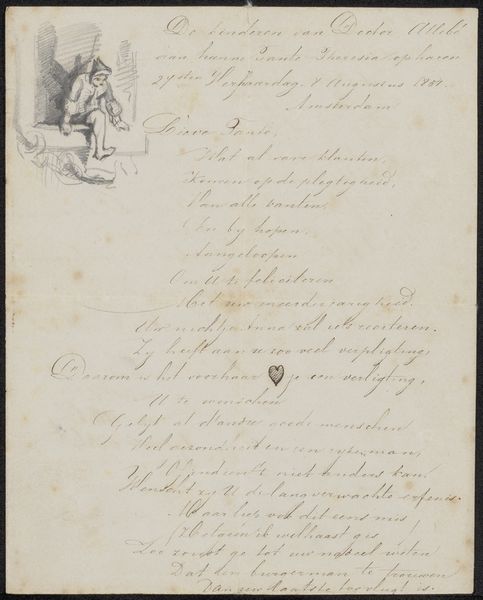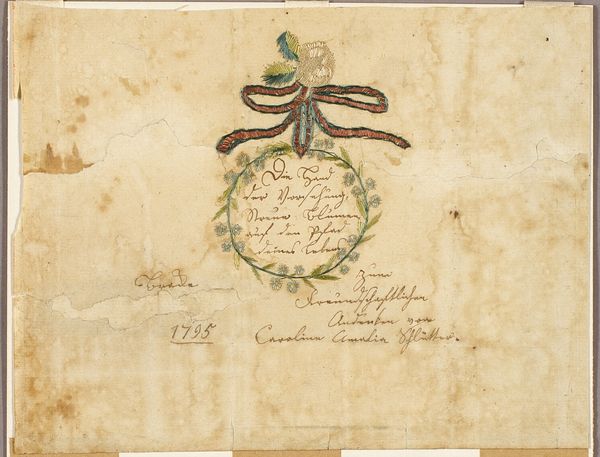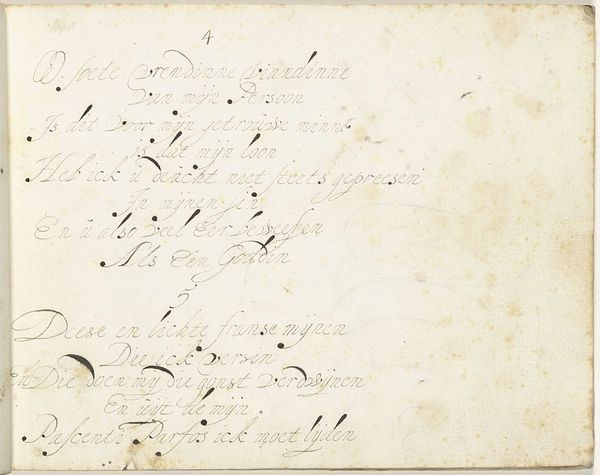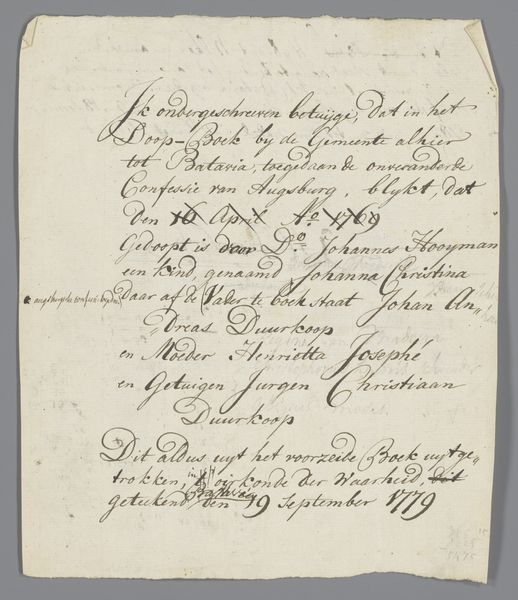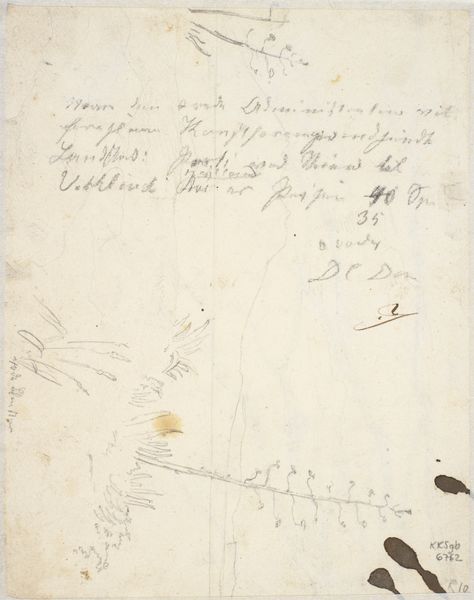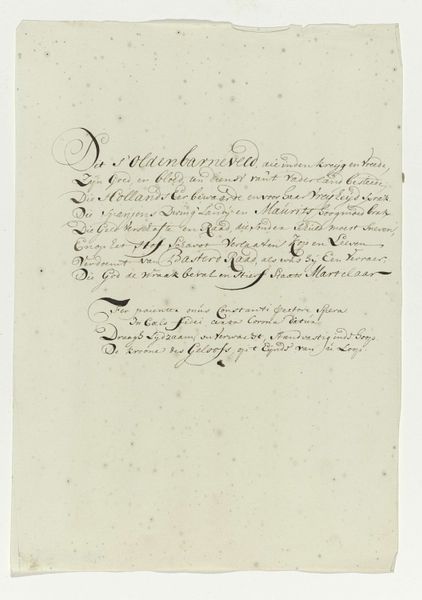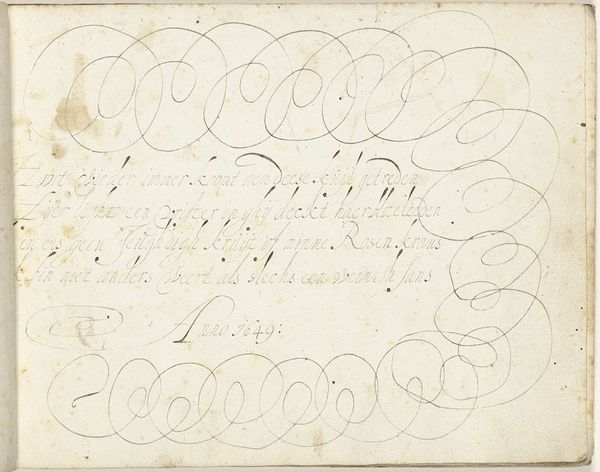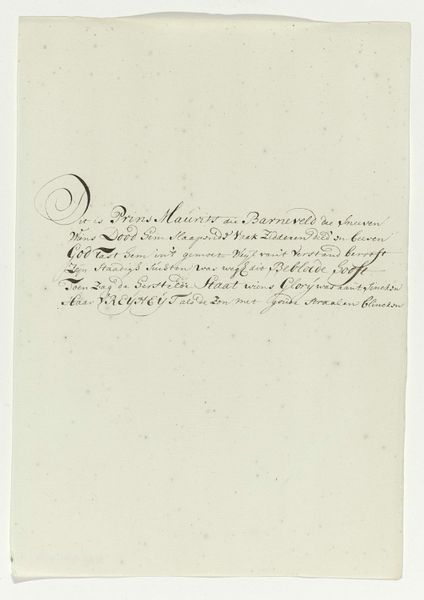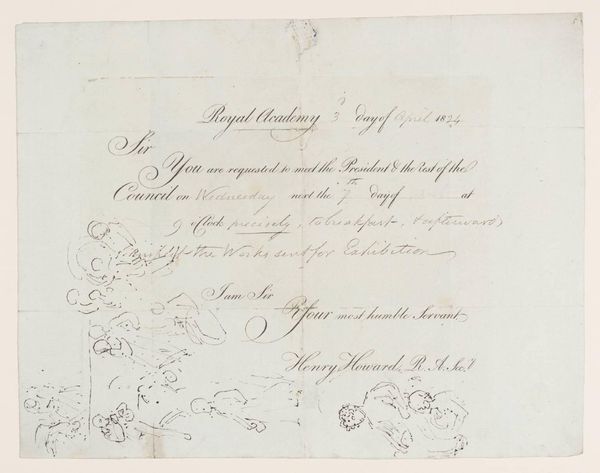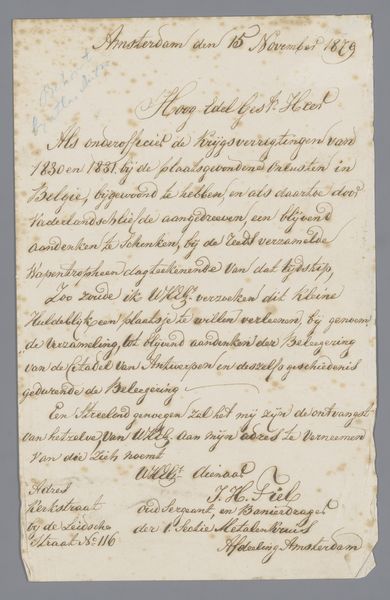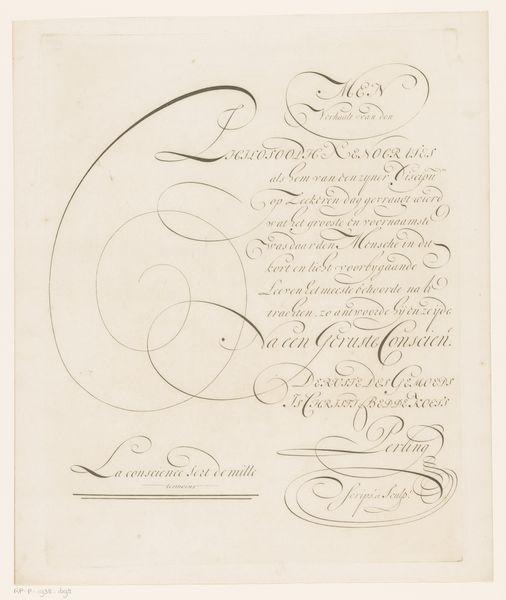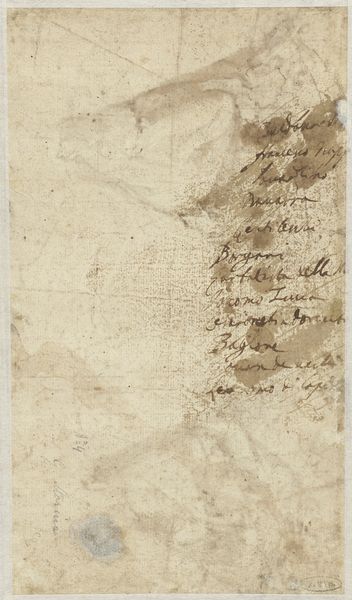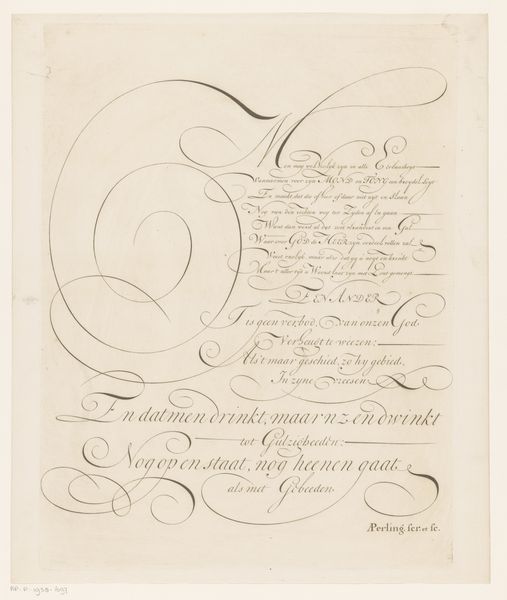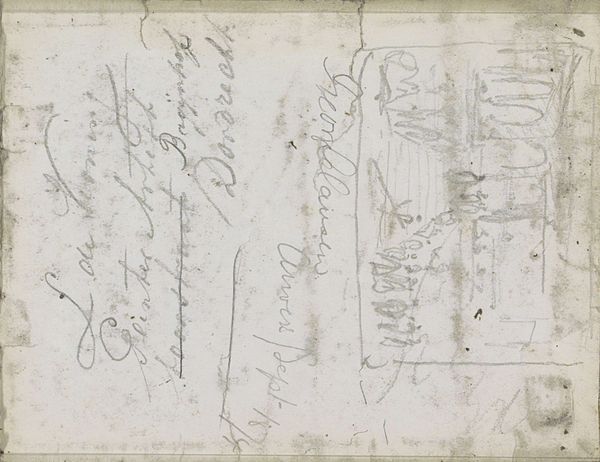
drawing, paper, ink
#
drawing
#
paper
#
ink
#
calligraphic
#
watercolor
#
calligraphy
Dimensions: 138 mm (height) x 138 mm (width) (bladmaal)
Curator: Looking at P.C. Skovgaard's "Liste af navne," which translates to "List of Names," completed between 1817 and 1875. It’s rendered in ink and watercolor on paper. The piece is currently held at the SMK, the Statens Museum for Kunst. Editor: It’s strangely haunting. The sepia tones, the flowing script, it reminds me of faded memory, something precious but slipping away. Curator: Indeed. Skovgaard’s landscapes are celebrated, but these kinds of preparatory studies, perhaps sketches or accounts, illuminate the social underpinnings of his artistic process. This isn't a polished artwork for display; rather, it's a behind-the-scenes glimpse. Editor: Absolutely. And the very act of listing names...it's inherently an act of social inscription. Who are these people? Are they patrons, collaborators, members of his circle? The list itself becomes a symbol of his connections, his place in the cultural landscape. The beautiful calligraphy elevates mere administration into art. Curator: The visual rhythm and form derived from handwriting traditions adds to this point, transforming simple transcription into deliberate composition. It’s an important question to explore: where do we draw a line between an artist's drafts and sketches, and a work meant to be shown and studied? Perhaps here there isn't much distinction. Editor: This piece complicates our view of Skovgaard as just a landscape painter. It asks us to consider him as a cultural participant, documenting and interacting with his contemporaries. The style reminds me of 19th century family records, a combination of the personal and bureaucratic. I like the small decorative embellishments to the left - could they denote particular families or even be abstract sketches? Curator: The combination of the formal script and somewhat loose application of the media create a unique tension between precision and spontaneity. The blotches and inconsistencies serve almost like atmospheric elements found in a landscape. Editor: In the end, viewing it makes me appreciate how names themselves serve as cultural markers that have an effect of historical record-keeping. I'm captivated. Curator: I agree, it certainly provokes an appreciation for art’s unexpected power in even the most subtle forms.
Comments
No comments
Be the first to comment and join the conversation on the ultimate creative platform.
